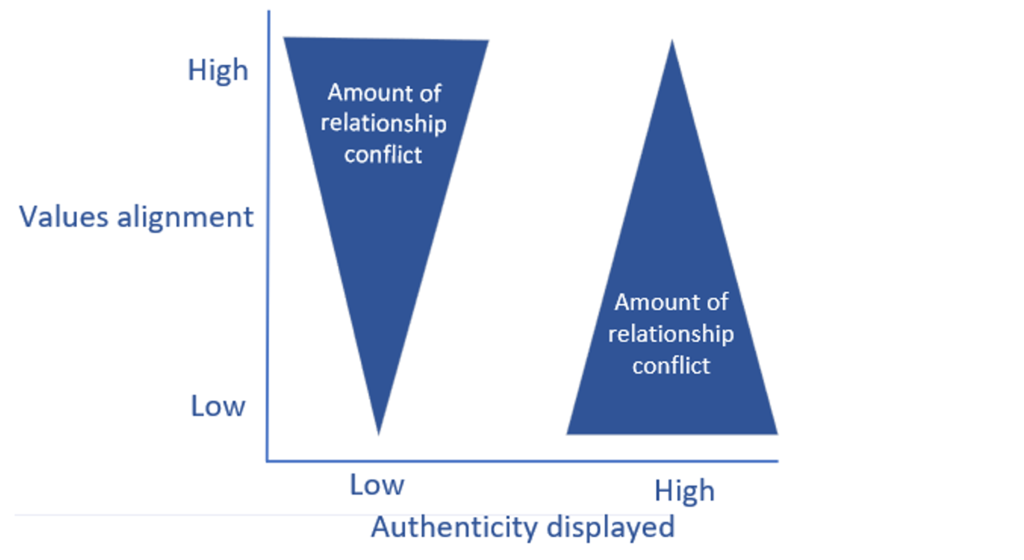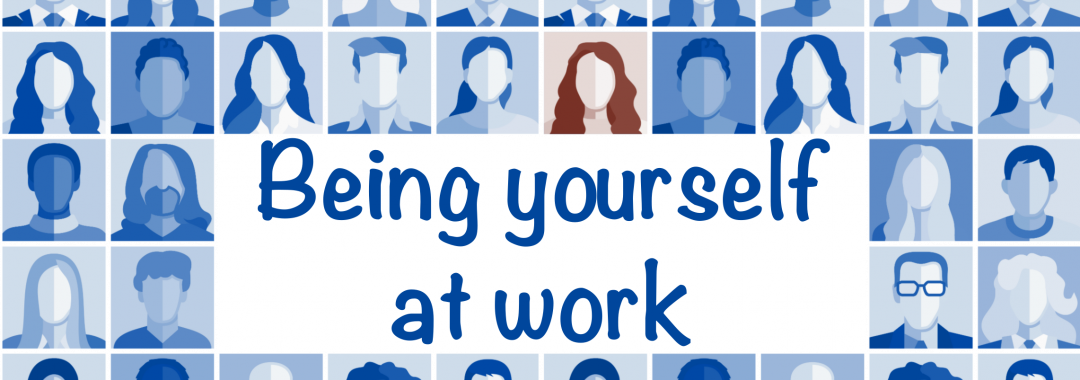
Employees are increasingly encouraged to be themselves at work; in other words, to be authentic. For example, the global technology and management consultancy, Capco, is actively promoting the need to ‘Be Yourself at Work’ #BYAW, explaining that it’s about ‘removing barriers and opening up new freedoms of self-expression in the workplace’. Similarly, the Harvard Business Review has posted a video to promote it. Yet recent research by Karelaia, Guillén and Leroy,[1] which examined its impact on workplace relations and task performance, has sounded a note of caution and questioned whether being yourself is wise in all contexts.
Being yourself and authenticity
Being yourself is closely associated with the notion of authenticity, which Karelaia and her colleagues define as follows: ‘A relatively stable disposition to behave in a way that is congruent with one’s values, self-representations, feelings, or cognitions.’ In other words, authenticity – or being yourself – is associated with an alignment between one’s inner self and one’s outward behaviour, as the figure below illustrates.

Is it wise to ‘be yourself’ in all contexts?
Karelaia and her colleagues wanted to explore whether the social context affects the benefits of being yourself, so they researched the following hypothesis:
For authentic behaviour to be appreciated by others, it should be aligned with the values and norms of the social context.
How did Karelaia and her colleagues research this question?
The researchers collected their data at a large multinational software development company in Spain. Participants were computer engineers from company offices located in different parts of the country and who worked in teams on software development projects. The study was conducted in Spanish.
At the beginning of the study, participants rated themselves for:
- The extent to which they behaved at work in line with their true self (i.e. how far they felt they were being themselves / being authentic at work)
- The extent to which they identified with the organisation they worked for (i.e. how far they felt their own values were aligned with their organisation’s values).
One year later, the participants’ supervisors rated them in two ways:
- The extent to which the participant experienced relationship conflict at work (i.e. how far there was friction or tension between the participant and colleagues)
- The extent to which the participant performed their task well (i.e. how well they carried out their work)
What did they find?
They found that the degree of alignment between (a) participants’ display of authentic behaviour and (b) the congruence of their personal values, beliefs etc. with those of their organisation affected ratings of relationship conflict.
In other words, the more people’s personal values were aligned with those of their organisation and the more they displayed those values in their behaviour, the lower the amount of relationship conflict reported by their superiors.
Conversely, the less that people’s personal values were aligned with those of their organisation and the more they displayed their own personal values in their behaviour, the greater the amount of relationship conflict reported by their superiors. The figure below shows this interconnection diagrammatically.

In addition, the researchers found that task performance was indirectly affected by authentic behaviour, in that it was affected by the amount of relationship conflict.
The researchers’ conclusion
The authors conclude that the advice to be yourself should be qualified to read “it depends” because the positive consequences of authenticity in the workplace may not be universal.
They also acknowledge various limitations to the study. A key question is the generalisability of their findings to other organisations and settings, especially since they were only partially replicated in a similar study with students. There are also various questions over the research methodology used, both the conceptual design and the measures used. (See the original article for more details.)
Key takeaways
From the point of view of (a) diversity and inclusion and (b) diversity and creativity, these findings could be concerning because they could be regarded as supporting the benefits of uniformity. However, an alternative way of reacting is to consider the ways that organisations and individuals can respond, with particular reference to the cultural context.
For more insights on cultural contexts, see our 3-part series Culture and Context, and especially Part 3.
Insights for organisations/teams/departments:
Organisations / departments / teams can vary in their ‘rule rigour’ culture; i.e. in the extent to which their members accept deviation from the norms or rules for ways of doing things. As the social psychologist Michele Gelfand[2] has argued, some cultural settings can be ‘tight’ and others ‘loose’. For diversity to be accepted as positive and for display of authentic behaviour to be appreciated, organisations, departments and teams all need to reflect on the tightness–looseness of their behavioural expectations, and to be open to the benefits of different viewpoints and ways of doing things.
Insights for individual employees:
Everyone needs to feel included and valued for who they are – this is clearly important for well-being. No one should have to put on a mask at work and wear themselves down by continually trying to keep their mask in place. However, it’s also important to remember that authenticity or being yourself is not an all or nothing phenomenon. It’s a continuum that ranges from high to low.
So, putting both of these insights together, we can conclude as follows:
Individuals need to
- be aware of the potential consequences of revealing their inner selves to colleagues and superiors,
- pay attention to any reactions they get when doing so,
- accept that they may need to vary the extent to which it is wise to be fully themselves in different work contexts.
At the same time, organisations / departments / teams need to
- examine the tightness–looseness of their cultural context,
- loosen any tightness that may be hindering inclusivity,
- promote diversity of viewpoints so that creativity and innovation can be fostered.
To learn more about enhancing well-being in culturally diverse workplaces, as well as how to mould a Global Fitness environment more broadly at work, see our book Global Fitness for Global People: How to Manage and Leverage Cultural Diversity at Work.
If you’d like to reflect more on any of these points, ask us about a coaching session, a guest talk, or a masterclass session. Just email GPC or Helen directly.
Professor Helen Spencer-Oatey, Managing Director
References
[1] Karelaia, N., Guillén, L., & Leroy, H. (2022). When being oneself is socially rewarded: Social identification qualifies the effect of authentic behavior at work. Human Relations, 75(11), 2058–2090. See also the following account in Forbes by the second author.
[2] Gelfand, M. (2018) Rule Makers, Rule Breakers. London: Robinson.

